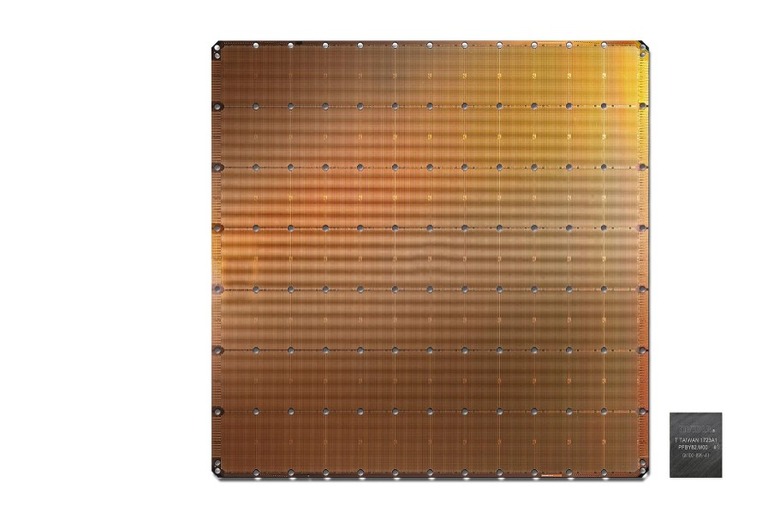Cerebras CS-1 Supercomputer Uses The Largest Chip Ever Built
A new supercomputer was built in collaboration with researchers at the National Energy Technology Laboratory (NETL) that can outperform one of the fastest supercomputers in the United States by more than 200 times. Cerebras showed that its single wafer-scale Cerebras CS-1 can solve a large, sparse, structured system of linear equations of the type used for modeling physical phenomena, such as fluid dynamics. Cerebras CS-1 uses a finite-volume method on a regular three-dimensional mesh.Solving the equations is fundamental to efforts such as weather forecasting, finding the best shape for an airplane wing, predicting temperatures, and predicting radiation levels in a nuclear power plant. Fluid dynamics is also important for modeling combustion in coal-burning power plants or making pictures of sedimentary rock layers in areas likely to have oil or gas.
Cerebras says three key factors enable the computer's speed, including the CS-1's memory performance, high bandwidth and low latency of the on-wafer communication fabric, and processor architecture optimized high-bandwidth computing. The system uses the world's largest chip measuring 72 square inches, the largest square that can be cut from a 300-millimeter wafer.
The chip is approximately 60 times the size of a large conventional chip like a CPU or GPU. It was constructed to provide a breakthrough in computer performance for deep learning. Cerebras says that it has delivered CS-1 systems to customers worldwide, where they are being used to provide a significant speed boost for leading-edge AI applications for several fields, including drug design and astronomy, among others.

The computer using the massive chip is more than 200 times faster than the NETL Joule 2.0 supercomputer, which features an 84,000 CPU core cluster. That particular supercomputer is the 24th fastest in the US and the 69th fastest in the world. The Cerebras CS-1 wafer holds nearly 400,000 individual processor cores, each with its own private memory and network router. The wafer-scale computer system is 26 inches tall in fits inside a standard datacenter rack.
